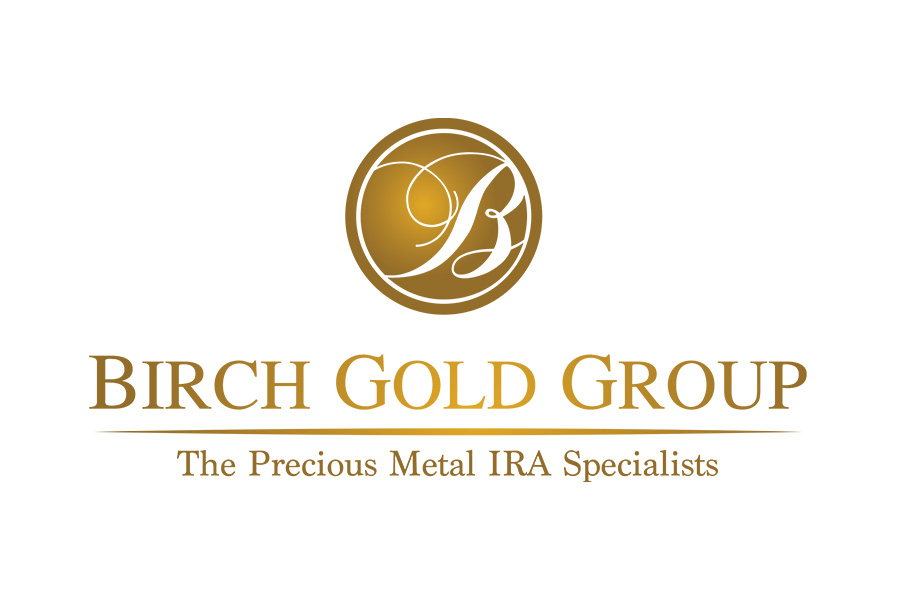Affiliate Disclosure
The owners of this website may be paid to recommend the following companies: Goldco, Augusta Precious Metals, Noble Gold Investments, and Birch Gold Group. The content on this website, including any positive reviews of the mentioned companies, and other reviews, may not be neutral or independent. We do believe in all the companies we recommend as being the most trustworthy in the business.
When it comes to investing in gold, there is a classic dilemma between gold stocks vs physical gold. For many investors, both gold stocks and physical gold are attractive investments as a safe-haven asset, but there are important differences between the two which make it important to understand the pros and cons of each option before committing your hard-earned money. In this blog post, we will look at the advantages and disadvantages of both gold stocks and physical gold, so that you can make an informed decision when it comes to investing in gold.
Understanding the Differences between Gold Stocks vs Physical Gold
When it comes to investing in gold, it’s essential to understand the differences between gold stocks vs physical gold. While both options offer the allure of a safe-haven asset, they have distinct characteristics that can impact your investment strategy and outcomes.
Gold stocks, also known as gold mining stocks, are shares of companies that mine and produce gold. Investing in gold stocks means buying a stake in a mining company rather than owning physical gold. These stocks are typically traded on stock exchanges and are subject to market fluctuations and investor sentiment.
Physical gold, on the other hand, refers to gold bullion or coins that you physically own and possess. It can be stored in a safe deposit box, a home safe, or a gold storage facility. Owning physical gold provides a tangible and secure investment, but it requires proper storage and may incur additional costs for insurance and security.

One key difference between gold stocks vs physical gold is the level of risk. Gold stocks are influenced by various factors such as company performance, management decisions, and global economic conditions. The performance of gold mining companies is often correlated with the price of gold but can deviate due to operational issues or other company-specific factors.
Physical gold, on the other hand, is not directly influenced by the performance of mining companies. Its value is primarily driven by supply and demand dynamics in the global market. It tends to serve as a hedge against inflation and currency fluctuations, making it a popular choice for those seeking a stable and tangible asset.
Another difference is the ease of entry and exit. Investing in gold stocks can be done through a brokerage account, making it easily accessible to investors. Buying physical gold, on the other hand, requires more effort and may involve additional costs such as shipping, insurance, and storage. Additionally, selling physical gold can involve finding a reputable buyer and negotiating a fair price.
Liquidity is also a factor to consider. Gold stocks offer more liquidity compared to physical gold. Selling gold stocks can be as simple as placing a trade on the stock market. However, selling physical gold may require more time and effort, as you need to find a buyer willing to pay a fair price.
Understanding these differences is crucial when deciding between gold stocks vs physical gold. It’s important to consider your investment goals, risk tolerance, and overall financial strategy. If you’re looking for potential growth and willing to accept market volatility, gold stocks may be a suitable option. If you prioritize security, tangible assets, and stability, physical gold might be more appealing.
Pros and Cons of Investing in Gold Stocks
When it comes to investing in gold stocks, there are several pros and cons to consider. Let’s start with the advantages. One of the biggest benefits of investing in gold stocks is the potential for significant returns. As the price of gold rises, the value of gold mining companies tends to increase as well, offering investors the opportunity to earn profits. This potential for growth makes gold stocks an attractive option for those seeking capital appreciation.
Another advantage of gold stocks is their liquidity. Unlike physical gold, which may require finding a buyer and negotiating a fair price, selling gold stocks can be as simple as placing a trade on the stock market. This ease of entry and exit allows investors to quickly respond to market trends and take advantage of favorable conditions.
Additionally, gold stocks provide investors with exposure to the gold industry without the hassle of storing physical gold. Owning shares in gold mining companies allows individuals to participate in the gold market without the need for a secure storage facility or worrying about insurance and security costs. This convenience can be especially appealing for those who want to invest in gold but prefer a more hands-off approach.
However, it’s important to note that investing in gold stocks also comes with its share of risks. One major disadvantage is the volatility associated with the stock market. Just like any other stock, the value of gold mining companies can fluctuate greatly depending on various factors such as economic conditions, investor sentiment, and company-specific issues. This volatility can lead to significant losses if the market takes a downturn.
Another potential drawback of gold stocks is the dependence on company performance.
While the price of gold is a key driver of gold mining stocks, other factors such as management decisions and operational issues can also impact their value. This means that even if the price of gold is rising, a poorly performing mining company may not experience the same level of growth. It’s essential for investors to carefully research and analyze the financial health and track record of gold mining companies before investing in their stocks.
In summary, investing in gold stocks offers the potential for significant returns and liquidity, while also exposing investors to the volatility and risks associated with the stock market. It’s crucial for individuals to carefully consider their risk tolerance, investment goals, and overall financial strategy before deciding to invest in gold stocks. Conducting thorough research and consulting with a financial advisor can help individuals make informed decisions and navigate the complexities of the gold stock market.
Pros and Cons of Investing in Physical Gold
Investing in physical gold offers its own set of pros and cons that investors should consider. Let’s take a closer look at the advantages and disadvantages of investing in physical gold.
One of the main advantages of investing in physical gold is the tangibility and security it provides. Owning physical gold in the form of bullion or coins gives you a physical asset that you can touch and hold. This can be especially appealing for those who value having a tangible investment that is not reliant on the performance of companies or markets.
Additionally, physical gold is considered a safe-haven asset, meaning it tends to hold its value during times of economic uncertainty. It can serve as a hedge against inflation and currency fluctuations, providing stability to your investment portfolio.
Another advantage of physical gold is its privacy. When you invest in physical gold, you have the option to keep it stored in a secure location of your choosing, such as a home safe or a safe deposit box. This ensures that your investment remains confidential and out of the public eye. In contrast, investing in gold stocks may require opening a brokerage account and sharing your personal information with financial institutions
Furthermore, physical gold is not subject to counterparty risk. Unlike other investments such as stocks or bonds, physical gold does not rely on the promise or performance of any individual or organization. It is a direct and independent store of value, giving you peace of mind that your investment is not tied to the stability of any particular company or financial institution.
However, investing in physical gold also comes with some drawbacks. One of the main challenges is the cost of storage and insurance. Physical gold needs to be stored securely to protect it from theft or damage. This may require additional expenses for renting a safe deposit box, installing a home safe, or utilizing a professional gold storage facility.
Additionally, insuring your physical gold against loss or theft can further add to the costs.
Another disadvantage is the lack of liquidity compared to gold stocks. Selling physical gold can be more time-consuming and require more effort compared to selling stocks on the stock market. It may involve finding a reputable buyer and negotiating a fair price. This lack of liquidity can limit your ability to quickly access funds if needed.
Gold Stocks vs Physical Gold

Factors to Consider when Choosing between Gold Stocks vs Physical Gold
When it comes to deciding between gold stocks and physical gold, there are several important factors to consider. These factors can help guide you in making the right investment choice based on your individual needs and goals.
- Risk Tolerance: One of the key factors to consider is your risk tolerance. Gold stocks tend to be more volatile compared to physical gold. The value of gold mining stocks can be influenced by a range of factors such as economic conditions, investor sentiment, and company-specific issues. If you are comfortable with market fluctuations and are willing to take on more risk for potentially higher returns, then gold stocks might be a suitable option. However, if you prefer a more stable and predictable investment, physical gold might be a better fit for you.
- Investment Goals: Consider your investment goals when deciding between gold stocks and physical gold. If your goal is capital appreciation and the potential for significant returns, then gold stocks could align with your objectives. On the other hand, if you are looking for a safe-haven asset that can preserve wealth and provide stability to your portfolio, physical gold may be more suitable.
- Liquidity: Another important factor to consider is liquidity. Gold stocks generally offer higher liquidity compared to physical gold. Selling gold stocks can be as simple as placing a trade on the stock market, allowing you to quickly access funds if needed. However, selling physical gold may require more time and effort, as you need to find a reputable buyer and negotiate a fair price. If you anticipate needing quick access to your investment, then gold stocks might be the better option.
- Storage and Insurance: Consider the costs and requirements of storing and insuring physical gold. Owning physical gold comes with the responsibility of proper storage to protect it from theft or damage. This may involve additional expenses such as renting a safe deposit box, installing a home safe, or utilizing a professional gold storage facility. Additionally, insuring your physical gold against loss or theft can further add to the costs. If you are comfortable with these additional expenses and responsibilities, physical gold could be a suitable investment choice.
- Diversification: Diversification is a key principle in investing. Consider how gold stocks or physical gold fit into your overall investment portfolio. If you already have exposure to stocks or other types of investments, adding physical gold can provide diversification and potentially reduce the overall risk of your portfolio. On the other hand, if you are heavily invested in the stock market and want to diversify outside of equities, then gold stocks could be a way to achieve diversification.
Our Top Trusted Company Picks for 2023
Our recommended Providers are researched and vetted by us and many top consumer organizations. This is the short list of the most consistent companies we could come up with. Request information from them below.
#1: Augusta Precious Metals
Our Rating: 10/10
Pros
✅ ZERO complaints with the BBB and BCA
✅ Highest reputation and customer satisfaction in the industry
✅ The best “White Glove” service!
✅ Non-commissioned sales team
✅ Transparent pricing with up to 10 years of fees waved – with qualifying purchase.
✅ Hall of fame quarterback, Joe Montana was an actual customer before becoming their spokesperson!
Call Augusta for your free gold kit now:
1-855-470-4636
Get FREE Gold when you open a gold IRA!
#2: Birch Gold Group
Our Rating: 9.9/10
Pros
✅ Great company commitment to education and communication
✅ Impeccable customer service
✅ Silver, gold, platinum and palladium available
Cons
❌ Signup process can only be done thought a specific link
❌ No buyback guarantee of precious metals
#3: Noble Gold Investments
Our Rating: 9.9/10
Pros
✅ One of the best no questions asked buyback programs in the industry
✅ Free delivery of your precious metals to your door at any time
✅ Over 20 years of experience in the precious metals industry
✅ Gold, silver, platinum, and palladium available
✅ Secure, exclusive storage in the
State of Texas
✅ One of the lowest barriers to entry – ideal for smaller investors
Cons
❌ High annual fees for low balances
❌ Offers common bullion only. Does not offer premium bullion or collectible coins
Call Noble Gold for your FREE Investing Kit!
1-626-684-4908
How to Invest in Gold Stocks
Investing in gold stocks can be an exciting and potentially lucrative opportunity. Here are some steps to guide you through the process of investing in gold stocks:
- Research and Educate Yourself: Before diving into any investment, it’s crucial to thoroughly research and educate yourself about the gold market and gold mining companies. Understand the factors that affect the price of gold, such as economic conditions, global demand, and geopolitical factors. Familiarize yourself with the major players in the gold mining industry and their financial performance. This knowledge will help you make informed investment decisions.
- Choose the Right Brokerage Account: To invest in gold stocks, you’ll need to open a brokerage account. Look for a reputable brokerage firm that offers a wide range of investment options, including gold mining stocks. Consider factors such as trading fees, customer service, and research tools when selecting a brokerage account. Ensure that the brokerage account aligns with your investment goals and risk tolerance.
- Evaluate Gold Mining Companies: Once you have a brokerage account, start evaluating gold mining companies. Look for companies with strong financials, a solid track record, and experienced management teams. Assess their production levels, reserves, and growth prospects. Analyze their operating costs and profitability. Consider factors such as the location of their mines, geopolitical risks, and sustainability practices. By conducting thorough due diligence, you can identify companies that have the potential for long-term growth.
- Diversify Your Investments: It’s important to diversify your investment portfolio, including your gold stock investments. Consider investing in multiple gold mining companies across different regions to reduce risk. Diversification allows you to mitigate the impact of any individual company’s performance on your overall investment.
- Monitor the Market: Once you’ve invested in gold stocks, it’s essential to stay informed about market trends and news that may impact the price of gold. Follow financial news, monitor economic indicators, and pay attention to geopolitical events. Regularly review the performance of the gold mining companies in your portfolio and assess whether any adjustments need to be made based on market conditions.
- Set Realistic Expectations: Investing in gold stocks involves both risks and rewards. Understand that the value of gold stocks can fluctuate and that past performance is not indicative of future results. Set realistic expectations and be prepared for market volatility. Consider your investment goals and time horizon when evaluating the performance of your gold stock investments.
Remember, investing in gold stocks requires careful consideration and due diligence. Seek the advice of a financial advisor if you need guidance or have any questions. With thorough research and a well-diversified portfolio, investing in gold stocks can potentially offer significant returns and contribute to the growth of your investment portfolio.
How to Invest in Physical Gold
Investing in physical gold can be a rewarding and secure investment strategy. If you’ve decided that physical gold is the right choice for you, here are some steps to help you get started:
Limited Time offer!
- Determine Your Budget: Before investing in physical gold, it’s important to determine how much you’re willing to allocate to this investment. Consider your overall financial situation and goals to determine an appropriate budget.
- Research and Educate Yourself: As with any investment, it’s crucial to educate yourself about physical gold. Familiarize yourself with different types of gold products, such as bullion and coins. Understand the different sizes and purity levels available. Research reputable dealers and understand the pricing and premiums associated with buying physical gold.
- Choose a Reliable Dealer: When investing in physical gold, it’s essential to work with a reputable dealer. Look for dealers who have been in the industry for a significant period and have a good track record. Read reviews and ask for recommendations from trusted sources. Verify the authenticity of the dealer’s products and ensure they provide proper documentation and certifications.
- Decide on the Type of Gold: Determine whether you want to invest in gold bullion or gold coins. Bullion bars typically offer a lower premium over the spot price of gold and are available in various sizes. Coins, on the other hand, may carry higher premiums but can offer additional numismatic value. Consider your investment goals and personal preferences when choosing between bullion and coins.
- Consider Storage Options: Think about how you will store your physical gold. Options include a home safe, a safe deposit box, or utilizing a professional gold storage facility. Each option comes with its own costs and security considerations. Ensure that your chosen storage method meets your needs for safety, accessibility, and peace of mind.
- Insure Your Investment: To protect your investment, consider insuring your physical gold against loss or theft. Contact insurance providers who specialize in insuring precious metals and inquire about coverage options. While insurance adds to the overall cost, it provides additional peace of mind and protects your investment.
- Regularly Monitor Your Investment: Keep an eye on the price of gold and market trends to monitor the value of your investment. Consider setting up alerts or notifications to stay informed about any significant price movements. Regularly assess the performance of your physical gold and evaluate whether any adjustments or diversification are needed.
By following these steps, you can confidently invest in physical gold and add this tangible and secure asset to your investment portfolio. Remember, investing in physical gold requires careful consideration and research. Seek the guidance of a financial advisor if needed to ensure that your investment aligns with your overall financial goals and risk tolerance. Happy investing!
A1. Gold stocks represent ownership in gold mining companies and are traded on stock exchanges, subject to market fluctuations. Physical gold is tangible bullion or coins that you own and store securely.
A2. Investing in gold stocks offers potential for significant returns and high liquidity. It allows exposure to the gold market without the need for physical storage.
A3. Gold stocks can be volatile due to factors like economic conditions and company-specific issues. Their performance depends on mining company decisions, which can be a risk.
A4. Physical gold provides tangible security, acts as a safe-haven asset, and is not subject to counterparty risk. It offers privacy and stability in times of economic uncertainty.
A5. Consider your risk tolerance, investment goals, liquidity needs, storage and insurance costs, and the role of diversification in your portfolio when deciding between the two.







Pingback: How to Buy Gold In Your Portfolio in 2023
Pingback: Investing in Gold: A Beginner's Step-by-Step Guide